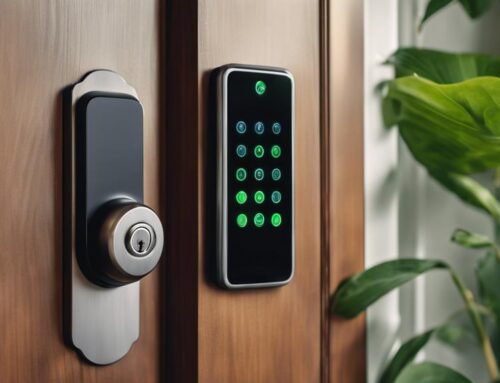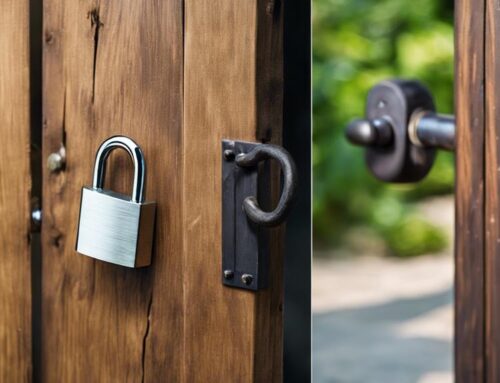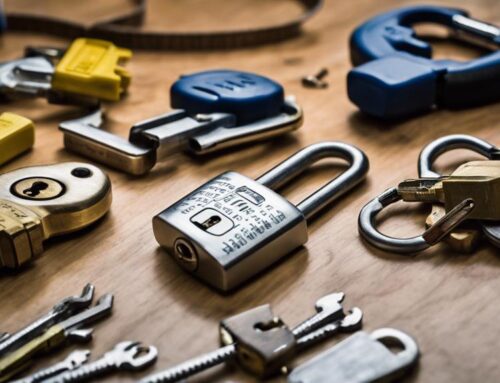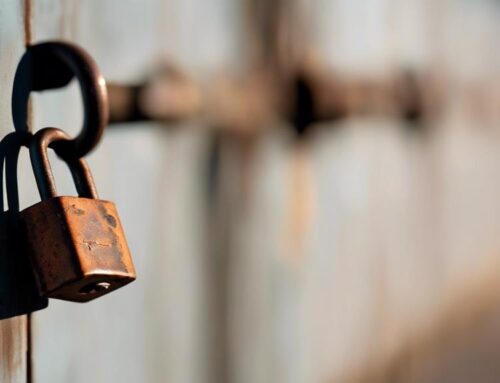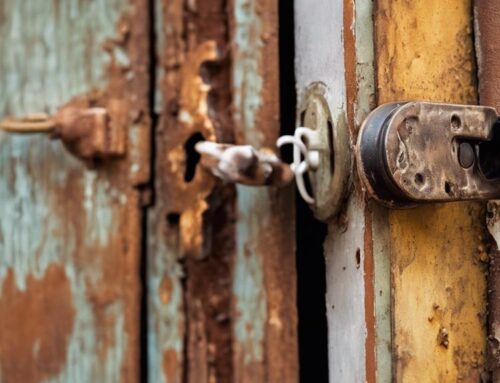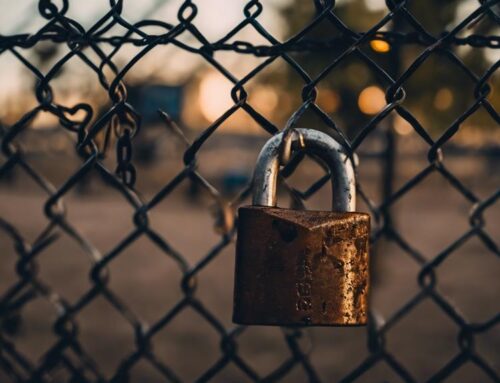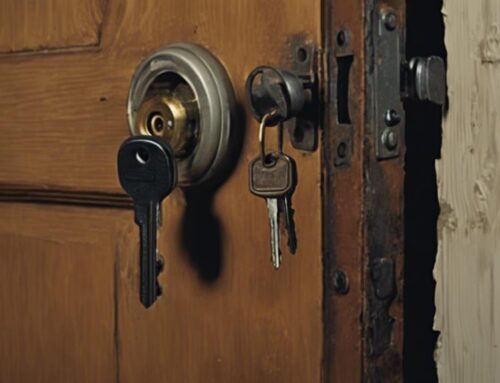After experiencing a home burglary, prompt action is essential to safeguard your family and property. First, call the police and report the incident; provide a detailed account of the damages. Document everything thoroughly—photos, lists, and receipts help immensely. Reach out to professionals like Low Rate Locksmith to secure your home; they promptly replace compromised locks and reinforce entry points. Don’t neglect your emotional well-being; lean on friends, family, or professional counselors for support. Quick, thorough action helps restore a sense of normalcy and control. For further steps on fortifying your home and peace of mind, continue onwards.
Introduction

Experiencing a home burglary is not only emotionally distressing but also disrupts your sense of security and peace. Immediate and decisive actions are vital in not only securing your property but also in aiding the emotional recovery process. Drawing from extensive experience, Low Rate Locksmith offers invaluable advice to help you navigate the aftermath and restore your home’s safety.
Brief overview of the emotional and practical impact of a home burglary
A home burglary can be an intensely distressing experience, leaving homeowners grappling with a profound sense of violation and insecurity. The emotional toll is significant, often manifesting as feelings of fear, worry, and loss. I recall a neighbor saying she couldn’t sleep for weeks, feeling unsafe in her own sanctuary. Practical concerns compound the emotional impact; immediate actions such as contacting the police and documenting damages are critical. The necessity of professional help, whether from counselors or security experts, becomes apparent as one copes with the event’s aftermath. Support from friends and family is invaluable in managing this challenging period, helping to restore a semblance of normalcy and control in the wake of such a disruptive event.
Importance of quick and decisive actions to restore security and peace of mind
Swift and decisive actions are paramount to restoring a sense of security and peace of mind following the trauma of a home burglary. Immediately contacting the authorities guarantees that the incident is documented, which is vital for both investigation and insurance claims. Personally, after experiencing a break-in, I found that promptly securing my property helped prevent further loss and provided a much-needed sense of control. Documenting damages and recreating the burglary scenario can reveal vulnerabilities in home security, allowing for targeted improvements. Consulting with professionals and seeking their guidance not only restores safety but also fortifies the home against future incidents. These steps are essential in reclaiming your sanctuary and rebuilding your peace of mind.
Mention of Low Rate Locksmith’s experience in dealing with post-burglary situations
In the aftermath of a home burglary, Low Rate Locksmith stands out as a trusted expert, leveraging their extensive experience to promptly and effectively restore security and peace of mind for homeowners. Their seasoned professionals specialize in securing properties post-burglary, understanding the critical need to reinforce entry points immediately. One client recalled how, within hours of discovering a break-in, Low Rate Locksmith arrived and swiftly replaced compromised locks, providing invaluable peace of mind. Their team not only addresses immediate security concerns but also offers expert advice on enhancing home security measures to prevent future incidents. With a customer-centric approach, Low Rate Locksmith ensures that their quick, reliable services prioritize the safety and satisfaction of every homeowner they assist.
Ensure Your Safety
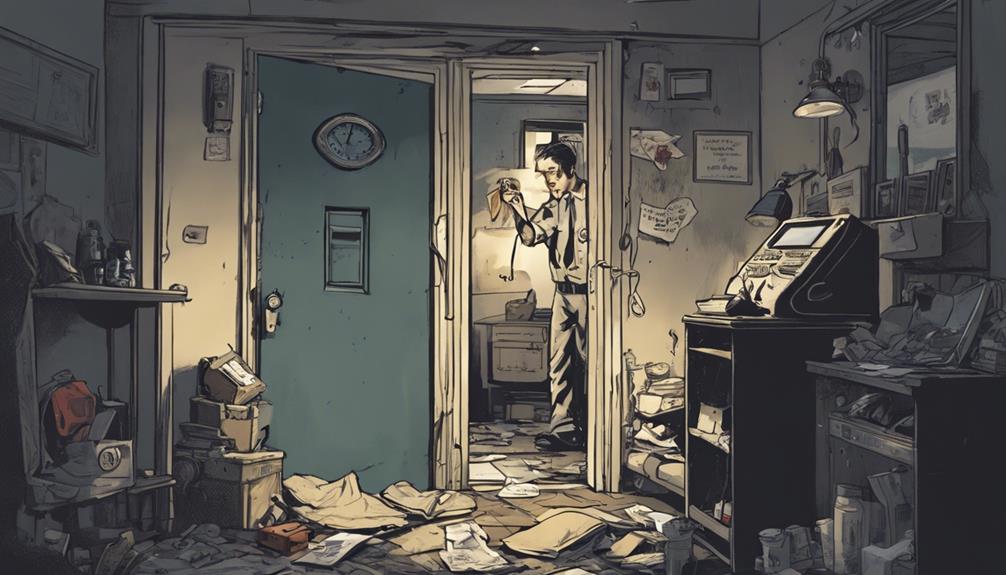
In the immediate aftermath of a home burglary, your primary focus should be on ensuring your safety and that of your loved ones. Quickly check for intruders and guide your family to a secure location, avoiding any confrontation. If you suspect danger, exit the home safely and seek assistance from neighbors or authorities while Low Rate Locksmith can help reinforce your property swiftly.
Explanation of the immediate need to check for intruders and ensure all family members are safe
Following a home burglary, your top priority must be to immediately check for intruders and guarantee the safety of all family members and pets. Begin by systematically inspecting each room to ascertain no one is hiding. Personal anecdote: a friend once found an intruder in their garage, reinforcing the need for thoroughness. Once you confirm the absence of intruders, verify the well-being of everyone in the home. Gather your loved ones in a secure location and avoid confrontation; it’s important to prioritize safety over heroics. Immediately contact the authorities to handle any potential threats. This proactive approach not only ensures immediate safety but also provides peace of mind, knowing you’ve taken control of a volatile situation.
Tips on safely exiting the home if there’s any suspicion of danger
Upon noticing any signs of danger during a home burglary, your immediate priority should be to exit the home swiftly and safely. Avoid confronting the intruder; instead, seek refuge at a neighbor’s house or a nearby safe location. I recall a neighbor sharing their frightening experience of encountering a burglar; their quick decision to leave prevented harm. Exiting promptly is essential to avoid potential confrontation. Do not risk staying inside if you suspect an intruder is still present. Contact authorities from a secure place and wait for their professional intervention. These actions guarantee your safety and allow law enforcement to handle the situation effectively, preserving both your well-being and peace of mind.
How Low Rate Locksmith can assist in securing the property quickly
Once you’ve reached a safe location and contacted the authorities, Low Rate Locksmith can swiftly step in to secure your property and restore your sense of safety. Their seasoned locksmiths arrive promptly, evaluating the damage with a keen eye for detail. I recall a recent client who felt immediate relief as our team reinforced her damaged door and repaired broken locks within hours. Low Rate Locksmith excels at fortifying entry points, ensuring no vulnerabilities remain. Beyond repairs, they can recommend additional security measures tailored to your needs, such as high-security locks or advanced alarm systems. With their expertise, you regain control over your home’s security swiftly and effectively, transforming a distressing situation into one of regained confidence.
Contact Authorities
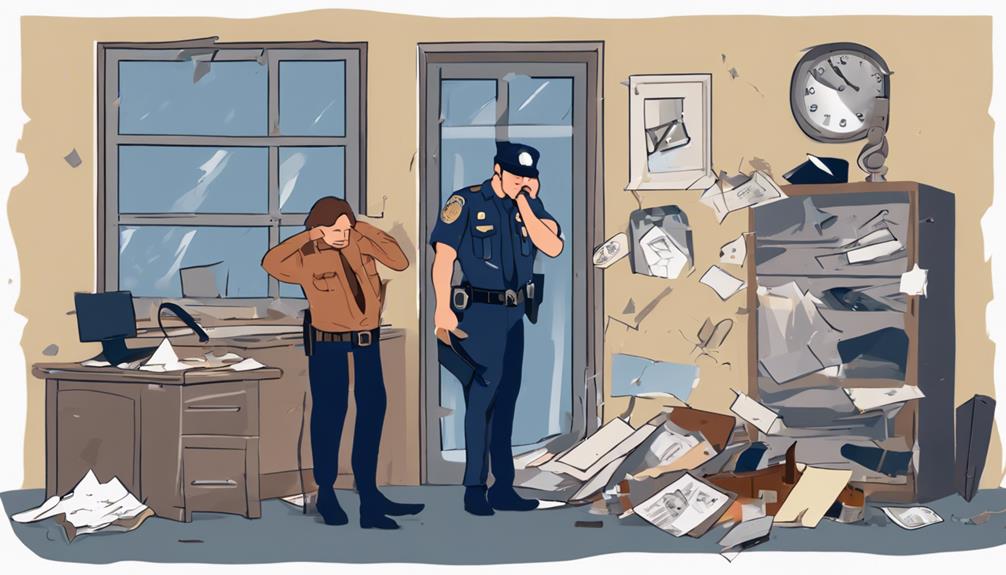
Contacting the authorities immediately after a home burglary is paramount for both your safety and the success of the investigation. As you wait for the police to arrive, remember to avoid touching anything to preserve potential evidence, and consider reaching out to a locksmith to secure any broken entry points. In my experience, swift reporting not only aids law enforcement in documenting the incident but also streamlines the process with your insurance company.
Importance of reporting the burglary to the police as soon as possible
Promptly reporting a home burglary to the police not only guarantees the likelihood of apprehending the perpetrator but also plays a critical role in the recovery of stolen possessions. For instance, I recall a neighbor who swiftly contacted authorities after discovering their home had been broken into; the timely report led to the quick retrieval of several valuable items. By providing detailed descriptions of suspects and missing belongings, homeowners empower law enforcement to act effectively. Additionally, filing a police report establishes an official record, indispensable for insurance claims. Immediate reporting is essential, as it ensures the police have the freshest and most accurate information, greatly boosting the chances of a successful resolution.
Steps to preserve the crime scene for evidence collection
Immediately contacting the authorities after discovering a home burglary is essential to preserve the crime scene and maintain the integrity of potential evidence. In a situation like this, it’s important to feel a rush of emotions, but maintaining control is paramount. Imagine this: A friend once returned home to find their front door ajar. Resisting the urge to step inside, they immediately called the police. This quick action guaranteed that law enforcement could conduct a thorough investigation, documenting the scene meticulously. Avoid touching or moving anything—each detail could be a critical clue. By preserving the crime scene, you greatly enhance the chances of identifying the intruder and recovering stolen items, providing a solid foundation for justice.
Role of locksmith services in aiding law enforcement by documenting forced entries
In addition to securing the crime scene, enlisting the expertise of locksmith services becomes invaluable, as they meticulously document forced entries and provide detailed analyses of lock damage for law enforcement. Expert locksmiths can ascertain the types of tools utilized during the burglary by examining lock tampering, offering essential insights into the intruder’s methods. By identifying specific techniques used to bypass security, locksmiths help authorities gauge the sophistication level of the perpetrator. This detailed documentation aids police investigations, highlighting entry points and reconstructing the sequence of events. Personal experience reveals that such expert analysis can be pivotal, transforming initial chaos into actionable intelligence, thereby empowering homeowners and law enforcement alike to regain control swiftly.
Document the Damage
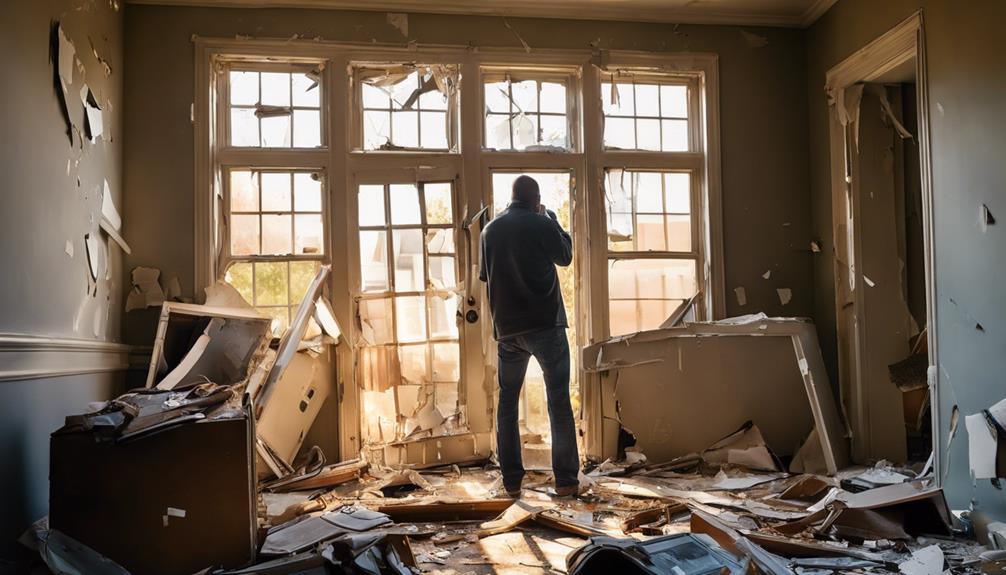
After ensuring your safety and contacting the authorities, it’s essential to meticulously document the damage left behind. Capture detailed photographs of any harm to your property and make a thorough list of stolen or disturbed items. Enlisting professionals like Low Rate Locksmith can greatly aid in identifying all entry points and damages, ensuring nothing is overlooked for your insurance claims.
Advice on photographing and listing damaged or stolen items for insurance claims
One of the important steps after experiencing a home burglary is carefully documenting the damage and loss to streamline the insurance claims process. Begin by taking clear, detailed photos of all damaged or stolen items. I recall a client who photographed every affected corner of their home, making sure not a single detail was missed. Create a thorough list, noting descriptions, values, and distinguishing features. Include any serial numbers, receipts, or appraisals to substantiate your claims. Document the pre-burglary condition of items for comparison. Organizing these records securely not only provides peace of mind but also expedites your claim. This meticulous approach ensures you maintain control and receive fair compensation for your losses.
How Low Rate Locksmith’s thorough inspection can help in identifying all points of entry and damage
Following the thorough documentation of damaged or stolen items, Low Rate Locksmith offers a detailed inspection service to identify all points of entry and damage sustained during the burglary. Their expert assessment meticulously documents damaged locks, doors, and windows, ensuring that no detail is overlooked. This thorough evaluation not only aids in creating a detailed report for insurance claims but also highlights areas needing immediate reinforcement. I recall a client who, after utilizing this service, felt a renewed sense of control and security. By identifying and addressing all vulnerable points, Low Rate Locksmith empowers homeowners to take targeted action, greatly enhancing overall home security and providing peace of mind.
Secure Your Home Immediately
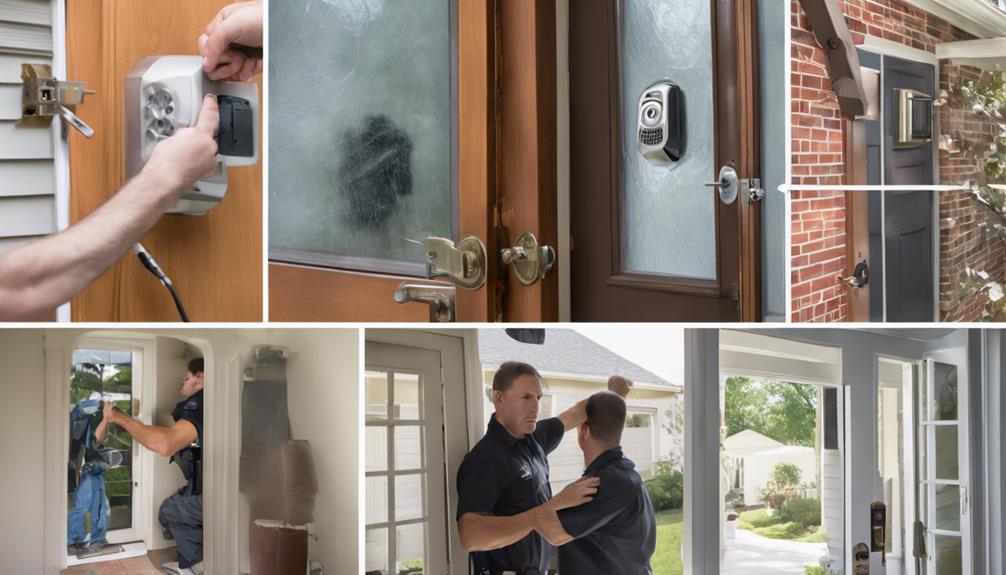
Securing your home immediately after a burglary is vital to prevent a repeat incident and guarantee your peace of mind. Begin by temporarily boarding up broken windows and reinforcing damaged doors, and promptly contact a reliable service like Low Rate Locksmith for emergency lock changes and repairs. This swift action not only addresses immediate vulnerabilities but also fortifies your home against future risks.
Steps to temporarily secure broken windows and doors until proper repairs can be made
In the immediate aftermath of a home burglary, securing broken windows and doors with temporary solutions such as wooden boards or metal bars is essential to maintaining your home’s safety. Utilizing plywood or metal grates can effectively prevent unauthorized access through compromised windows. For doors, consider employing temporary locks or reinforcements like metal brackets to enhance security. Leaving broken entry points unprotected may invite further intrusion attempts. I recall a client who swiftly installed metal bars on their shattered window, providing peace of mind until professional repairs could be arranged. Promptly addressing these vulnerabilities helps regain a sense of control while you arrange for permanent solutions to restore the integrity of your home.
Services offered by Low Rate Locksmith for emergency lock changes and repairs
When faced with the unsettling aftermath of a home burglary, enlisting the emergency services of Low Rate Locksmith guarantees your home is swiftly and effectively secured by professionals. Available 24/7, their expert locksmiths specialize in quick and efficient lock changes, ensuring your peace of mind. I remember a friend who, after a break-in, found solace in their prompt response—arriving within minutes, fully equipped to tackle the job. Their team’s proficiency in handling urgent lock-related issues means you’re not just getting a quick fix, but a robust security enhancement. With Low Rate Locksmith, you regain control, knowing your home is protected by reliable and skilled professionals, ready to restore security at a moment’s notice.
Importance of immediate security reinforcement to prevent further incidents
Taking immediate action to reinforce your home’s security after a burglary is essential in preventing further incidents and safeguarding your peace of mind. When my neighbor experienced a break-in, she quickly repaired damaged entry points and upgraded her locks. This swift response not only deterred potential repeat offenses but also restored her sense of control. Reinforcing security measures such as robust locks and secure windows creates formidable barriers against intruders. Additionally, promptly addressing any damage from the break-in fortifies your home’s defenses. Acting quickly conveys a proactive stance, greatly reducing the risk of future incidents. Remember, enhancing your home’s security immediately after a burglary is a critical step to protect your property and maintain your peace of mind.
Inform Your Insurance Company
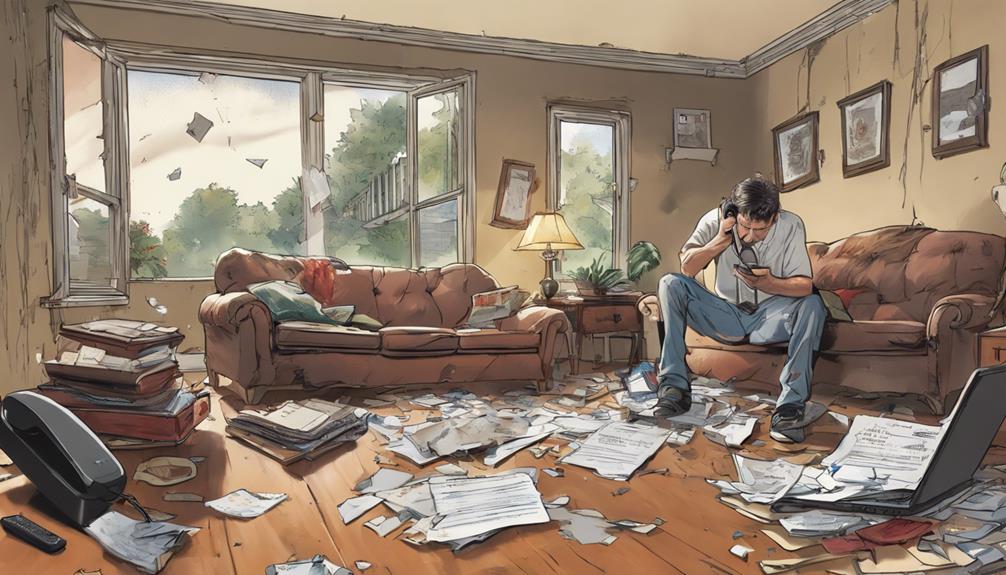
After confirming your home is secure, your next important step is to contact your insurance provider to report the burglary. Providing them with detailed documentation, including a list of stolen items and any locksmith records, can greatly expedite the claims process. From my own experience, prompt and thorough communication with your insurer not only ensures a smoother claim but also helps in understanding your coverage better.
Tips on contacting your insurance provider and providing necessary documentation
Promptly informing your insurance company after a home burglary is essential to guarantee a smooth claims process and to facilitate the timely recovery of losses. Start by providing a detailed account of the incident, including a thorough list of missing items and any property damage. Having a copy of the police report at hand will streamline the documentation process. It’s important to understand your policy coverage and any deductibles that apply. Personally, I found that keeping all correspondence meticulously documented helped in follow-ups and ensured nothing was overlooked. Remember, clear and precise communication with your insurer is key to expediting your claim and regaining control over your situation.
How locksmith documentation of the burglary can expedite your insurance claims
Enlisting the expertise of a locksmith to document the burglary can greatly expedite the insurance claim process by providing professional verification of the incident and evidence of forced entry. Imagine the peace of mind knowing that a certified professional is detailing the condition of your locks and identifying how the break-in occurred. This thorough documentation, paired with your police report and photos of the crime scene, creates a compelling case for your insurance company. I recall a client who swiftly received reimbursement because their locksmith’s detailed report left no room for doubt. Timely and accurate submission of these documents can noticeably shorten the stressful wait for compensation, allowing you to regain control over your home and security.
Review and Upgrade Your Home Security
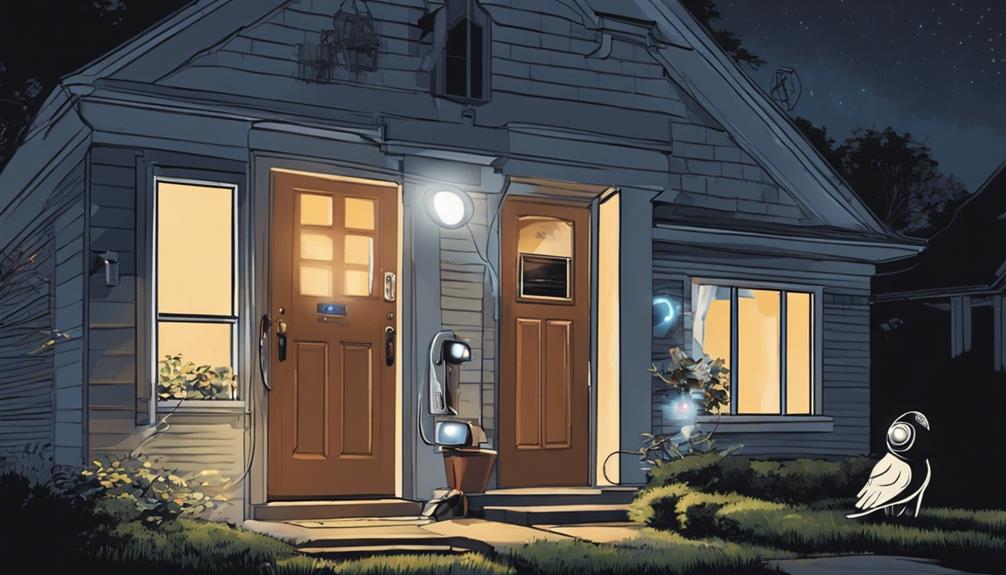
In the wake of a home burglary, conducting a comprehensive security audit is essential to identify any vulnerabilities. Modern security solutions, such as high-security locks and advanced surveillance systems, can greatly enhance your protection. Consulting with professionals, like those at Low Rate Locksmith, can provide tailored recommendations to fortify your home against future threats.
Conducting a comprehensive security audit to identify vulnerabilities
After experiencing a home burglary, conducting a thorough security audit is crucial to identifying and addressing any vulnerabilities in your home’s defenses. Begin by closely examining door and window locks for potential weaknesses; these are common entry points for intruders. Personally, I found that upgrading to more secure locks made a significant difference in peace of mind. Don’t overlook outdoor lighting; poor visibility can provide cover for burglars. Assess the effectiveness of your current security measures and make improvements as needed. It can be beneficial to seek professional advice to make sure your security upgrades are ideal. By meticulously reviewing and enhancing your home’s security, you can regain control and protect against future incidents.
Discussion of modern security solutions, including high-security locks and surveillance systems
To fortify your home security and deter potential intruders, incorporating modern solutions such as high-security locks and state-of-the-art surveillance systems can be highly effective. High-security locks, like British Standard locks, offer robust protection against break-ins. For instance, after upgrading to these locks, I noticed a significant sense of security. Surveillance systems equipped with motion detection and remote access provide real-time monitoring, deterring criminal activity. Smart security technology, including smart locks and video doorbells, adds convenience while enhancing safety. Remember my neighbor who installed a video doorbell? It notified him instantly of suspicious activity, allowing quick action. Consulting professional locksmiths to assess your home security needs provides tailored recommendations, bringing peace of mind and safeguarding your property.
Services offered by Low Rate Locksmith to upgrade and enhance home security
Drawing on their expertise in home security, Low Rate Locksmith offers thorough services designed to upgrade and enhance your current security measures. Their professional locksmith inspections meticulously identify vulnerabilities in your existing system, giving you actionable insights. For instance, when my friend Sarah consulted them, their recommendation for British Standard lock upgrades provided her with immediate peace of mind. They also specialize in repairing and reinforcing entry points to deter re-entry attempts, ensuring your home becomes a less appealing target. Additionally, their expert advice on security upgrades helps prevent future break-ins. For anyone seeking to regain control and fortify their home, Low Rate Locksmith’s extensive services are an invaluable resource.
Consider a Security System
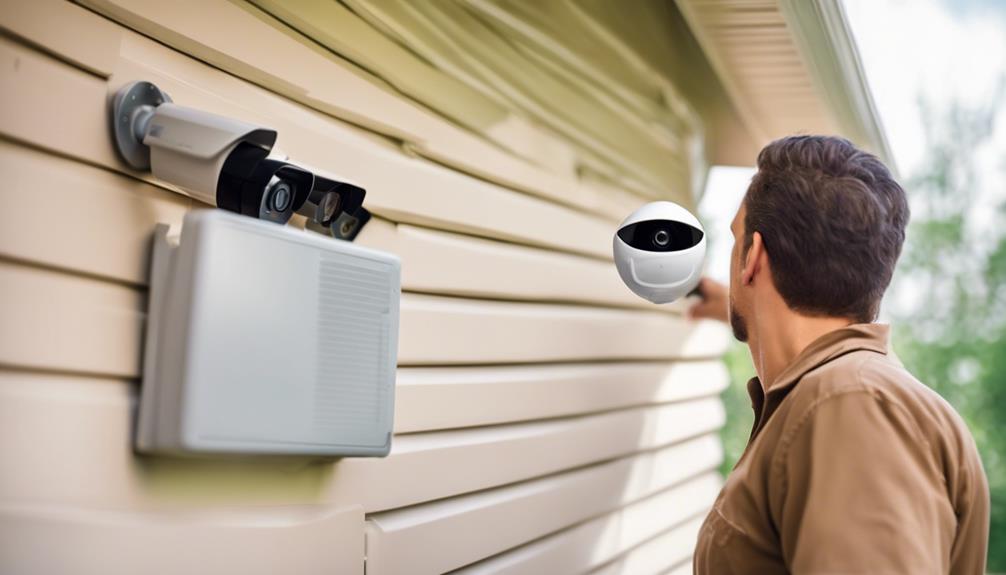
After experiencing a home burglary, installing a security system can be an essential step towards reclaiming peace of mind and safeguarding your property. Modern systems not only deter potential intruders with alarms and cameras but also offer smart technology for remote monitoring, allowing you to keep an eye on your home from anywhere. Low Rate Locksmith can seamlessly integrate these advanced security features with your existing locks, enhancing your overall protection strategy.
Benefits of installing a monitored security system post-burglary
Frequently, the installation of a monitored security system post-burglary not only provides a formidable deterrent to future intrusions but also greatly enhances a homeowner’s peace of mind. Real-time alerts to authorities guarantee rapid response, minimizing potential damage. Personal experiences highlight the relief felt knowing that professional monitoring is always active. One homeowner shared how their remote access to security cameras allowed them to check on their property from vacation, alleviating worries. Additionally, many insurance companies provide premium discounts for homes equipped with these systems, translating to long-term savings. Such systems empower homeowners, reestablishing a sense of control and security after the unsettling experience of a break-in.
Types of security systems available and their features
Homeowners seeking to bolster their security post-burglary can choose from a variety of sophisticated security systems, each offering distinct features such as motion sensors, high-definition cameras, and integrated alarms. For instance, a friend of mine recently installed a system with remote monitoring via a smartphone app, allowing her to check in on her property from anywhere. Smart security systems can seamlessly integrate with other smart home devices, providing automated control and convenience. Additionally, subscribing to professional monitoring services guarantees an immediate response to security breaches, delivering peace of mind. These systems not only enhance home protection but also act as a powerful deterrent to potential intruders, granting homeowners the control they seek over their safety.
How Low Rate Locksmith can integrate security systems with existing locks and security measures
Low Rate Locksmith excels in seamlessly integrating advanced security systems with existing locks, creating a fortified and cohesive home security solution. By leveraging their expertise, they can incorporate smart locks and alarm systems alongside your current security measures. This integration guarantees that traditional lock mechanisms work harmoniously with modern technology, providing robust protection against potential intrusions. Imagine the peace of mind that comes from knowing your home is safeguarded by a multilayered security system. With Low Rate Locksmith’s tailored solutions, you maintain control over every aspect of your home security. Their approach not only enhances the effectiveness of your existing locks but also introduces cutting-edge features for thorough, impenetrable protection.
Take Care of Your Emotional Well-Being

Experiencing a home burglary can leave a profound emotional impact, making it essential to prioritize your emotional well-being. Recognizing the trauma and seeking support, whether through professional counseling or community resources, can greatly aid in processing feelings of violation and fear. At Low Rate Locksmith, we empathize with the emotional toll and are dedicated to offering continuous support to help you restore both your home’s security and your peace of mind.
Recognizing the emotional trauma following a burglary and seeking support
Managing the emotional aftermath of a burglary often requires acknowledging the profound sense of violation and seeking timely professional support to facilitate healing. Each person’s reaction to a burglary is unique; some may experience intense fear or anxiety about future break-ins. Addressing these feelings is essential for regaining a sense of security and normalcy. I recall a neighbor, distraught after a burglary, who found solace through counseling, which helped her navigate the emotional turmoil. Recognizing the necessity of mental well-being, she sought professional guidance, which greatly contributed to her recovery. Taking such proactive steps can empower victims to regain control over their lives and emotions, transforming trauma into resilience.
Resources and advice on coping strategies
Having acknowledged the emotional impact of a burglary, it’s important to explore practical resources and coping strategies that can support your emotional well-being during this challenging time. Recognize that individual reactions vary; some may feel violated, while others experience heightened anxiety about future break-ins. Reach out for professional help if emotions become overwhelming—counselors or therapists can provide valuable support. Additionally, engage in self-care practices like exercise, meditation, or hobbies to manage stress. Sharing personal anecdotes with friends or support groups can offer comfort and reassurance that you’re not alone. Remember, taking essential steps to address your emotional health is vital in regaining a sense of control and security in your life.
Assurance from Low Rate Locksmith on the continuous support to restore your home’s security
In the aftermath of a burglary, Low Rate Locksmith provides unwavering support and expert guidance to help restore your home’s security, while also emphasizing the importance of addressing your emotional well-being during this challenging time. From securing entry points to reinforcing overall security measures, their dedicated team guarantees your home becomes a safe haven once again. Personal anecdotes from satisfied clients reveal how the professional reassurance and practical assistance offered by Low Rate Locksmith have been pivotal in regaining their peace of mind. Understanding that emotional recovery is as critical as physical security, they offer continuous support, making you feel protected and in control every step of the way. Trust in their expertise to help you navigate this difficult period.
Conclusion
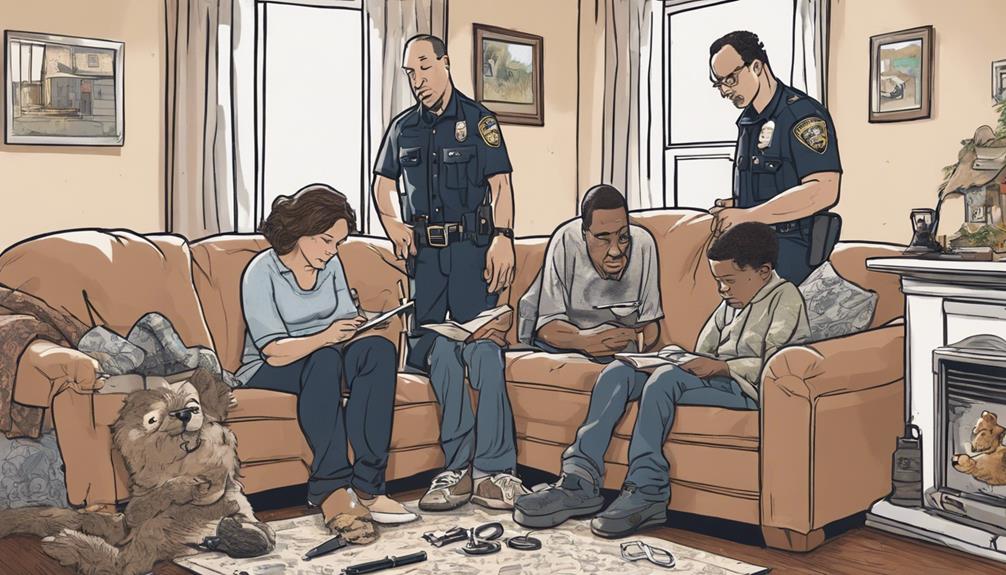
To conclude, after a home burglary, it’s essential to promptly report the incident, document losses, and engage with insurance processes. Taking proactive measures can also help safeguard your home against future incidents. For thorough support and expert guidance, consider reaching out to Low Rate Locksmith, who are dedicated to helping you navigate these challenging times.
Recap of the essential steps to take after a burglary
After experiencing a burglary, the path to recovery involves several essential steps to guarantee both your safety and financial well-being. First, contact the authorities promptly to report the incident, providing detailed information. This not only initiates the legal process but also helps in recovering stolen items. Document all damages and stolen items meticulously for insurance claims. Engaging with your insurance company promptly can mitigate financial losses. Recreating the burglary scenario can help identify and rectify weak points in your home’s security. Personal experience shows that seeking guidance from authorities can provide clarity and support during this stressful time. By following these steps, you can regain a sense of control and start rebuilding your peace of mind.
Encouragement to take proactive measures to prevent future incidents
Securing your home against future incidents involves a multifaceted approach, combining physical upgrades and community engagement to create a robust defense strategy. Upgrading to high-security locks and reinforcing entry points are essential first steps. My neighbor, after experiencing a break-in, installed a thorough home security system, which not only provided peace of mind but also deterred potential intruders. Consulting security professionals can help tailor a plan specific to your home’s vulnerabilities. Additionally, joining a neighborhood watch program fosters a community vigilant in safeguarding against crime. Implementing smart home technology further enhances security, allowing you to monitor your property in real-time. Taking these proactive measures reduces the likelihood of another burglary, empowering you to regain control.
Invitation to contact Low Rate Locksmith for comprehensive post-burglary support and services
Frequently, homeowners find themselves at a loss after a burglary, but contacting Low Rate Locksmith can provide the thorough support and expert advice needed to restore security and peace of mind. Their team specializes in lock repairs, security upgrades, and emergency locksmith services, ensuring your home is secure once more. A client recently shared how Low Rate Locksmith’s swift response and all-encompassing solutions made them feel in control again after a break-in. Prioritizing customer safety and satisfaction, Low Rate Locksmith’s experts offer reliable assistance and guidance every step of the way. Trust in their expertise to safeguard your property and prevent future incidents. Reach out to Low Rate Locksmith for the peace of mind you deserve.
Additional Notes

Following a home burglary, it is crucial to prioritize actionable steps for recovery and future prevention. Detailed documentation of damages and thefts is not only helpful for insurance claims but also supports law enforcement in their investigations. Utilizing professional services like Low Rate Locksmith can improve your home’s security, offering peace of mind and helping to protect against future incidents.
Each section should provide detailed and actionable advice
In the aftermath of a home burglary, taking immediate and well-thought-out actions is essential for restoring security and peace of mind. First, contact the authorities to report the incident, providing all necessary details. Document any damages and list missing items to facilitate insurance claims and support police investigations. Secure your home by reinforcing entry points. I remember a client who fortified their doors and windows after a break-in, which dramatically improved their sense of safety. Seek professional help to repair damage and consider upgrading your security system. Finally, develop a detailed security plan to prevent future incidents. These steps not only restore order but also empower you to take control of your home’s safety.
To guarantee your home is thoroughly secured after a burglary, consider leveraging the expertise of Low Rate Locksmith to address any immediate vulnerabilities and enhance your overall security framework. Their emergency locksmith services are essential for repairing damaged locks and reinforcing entry points, making it harder for intruders to gain re-entry. I recall a friend who, after a break-in, found peace of mind through their prompt, professional assistance. Low Rate Locksmith not only secured her home quickly but also provided invaluable advice on improving her overall security measures. This seamless shift from addressing immediate threats to implementing long-term solutions safeguards your property, blending immediate needs with future safety effortlessly.
Emphasis on the expertise and reliability of Low Rate Locksmith in handling post-burglary situations and enhancing home security
Leveraging their extensive experience and unwavering reliability, Low Rate Locksmith stands out as a trusted partner in fortifying home security and addressing the aftermath of a burglary. Their expert team offers meticulous guidance on securing entry points and reinforcing door locking mechanisms, essential for preventing future break-ins. A client once shared how Low Rate Locksmith’s comprehensive security planning transformed their sense of safety, highlighting the company’s commitment to protecting valuables and installing state-of-the-art home security equipment. Moreover, Low Rate Locksmith doesn’t just focus on physical security; they also provide emotional support, helping homeowners navigate the distressing aftermath of a burglary. With Low Rate Locksmith, homeowners gain control and peace of mind, knowing their sanctuary is secure.
Frequently Asked Questions
How Can I Prevent Future Burglaries?
Preventing future burglaries is akin to fortifying a castle. Upgrading to British Standard locks is essential, as it strengthens your fortress. Always lock doors when leaving; it’s your first line of defense. Consult a professional locksmith for a security inspection to uncover hidden vulnerabilities. Regularly check the UK police force website for crime trends. Tailor a thorough security plan by seeking advice from experts, ensuring peace of mind.
What Should I Do if Important Documents Were Stolen?
If important documents were stolen, immediately contact your bank and credit card companies to report the theft. Notify relevant government agencies about any missing identification documents, such as passports or driver’s licenses. Monitor your credit report for suspicious activity and consider placing a fraud alert or credit freeze. Maintain a detailed list of stolen documents for reference when reporting the incident to authorities and your insurance company.
Are There Specific Locks Recommended for Better Security?
In the domain of security, similar to fortifying a castle, British Standard locks are highly recommended to deter intruders. High-security locks, such as deadbolts and smart locks, and upgrading to anti-snap locks, provide formidable barriers against unlawful entry. Multi-point locking systems further enhance the defense of doors and windows. Consulting a professional locksmith guarantees that your fortress remains impregnable, tailored precisely to your specific security needs.
How Do I Handle Identity Theft After a Burglary?
To handle identity theft after a burglary, immediately monitor your bank statements, credit reports, and accounts for suspicious activity. Notify credit bureaus and financial institutions right away if you suspect identity theft. Consider placing a fraud alert or credit freeze on your accounts to mitigate further risks. Additionally, seek guidance from identity theft protection services or legal professionals to navigate the resolution process efficiently and regain control over your personal information.
What Should I Do if My Keys Were Taken?
‘An ounce of prevention is worth a pound of cure.’ If your keys were taken, change your locks immediately to prevent unauthorized access. Contact a professional locksmith to evaluate your home’s security and propose upgrades such as high-security locks or keyless entry systems. Document all stolen keys and update your key management system. Taking these steps guarantees you regain control and safeguard your home against future break-ins.

